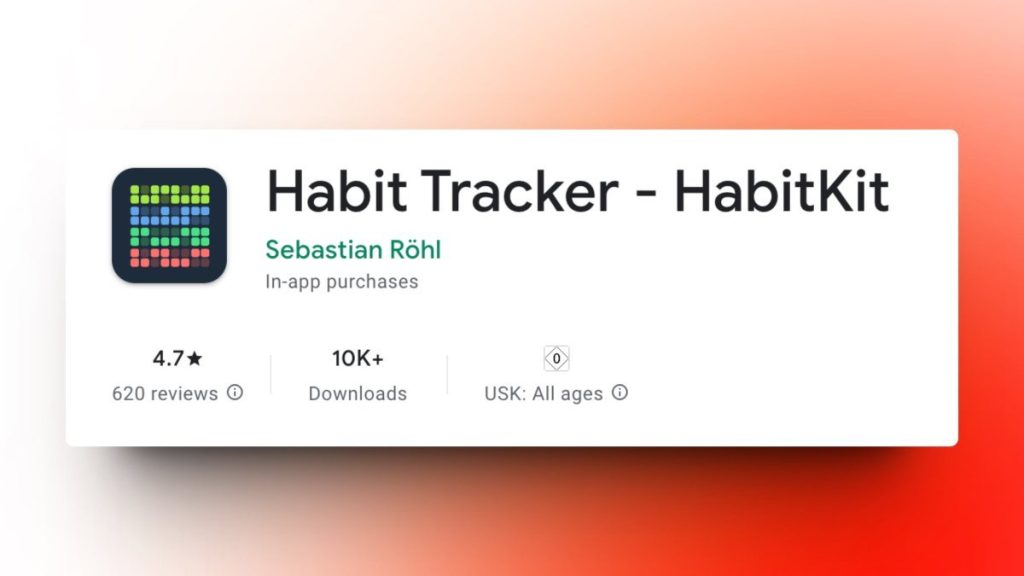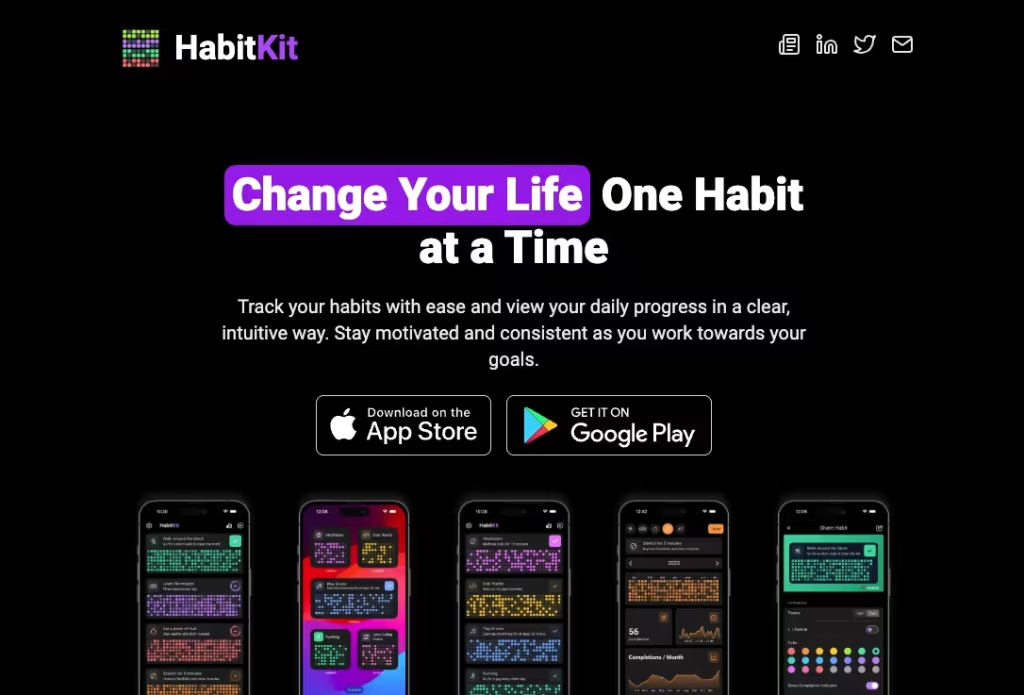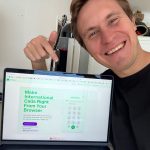When Sebastian Röhl launched his first app, it barely made a ripple, but instead of giving up, he took everything he learned and built HabitKit, a minimalist habit tracker that quietly climbed to more than $15,000 a month in revenue. This is the story of how he did it, keeping things simple and staying consistent.
Back and Forth Between Employment and Building
Sebastian started out working as a software engineer for three years but wanted more freedom. He wanted to choose his own projects, his own hours, and ideally his own boss so in 2022 he quit.
A year later, his projects still hadn’t taken off, so he returned to his job and built on the side instead. Then things started to move. His apps began earning enough to cover his expenses, and by February 2024 he quit again, this time for good.
He now runs three mobile apps across iOS and Android, but HabitKit is his main source of income and the most successful of the three. Liftbear was his first app, born from a love of weightlifting and an attempt to fix the flaws in other tracking tools. WinDiary is a small side app for recording personal milestones and victories.
HabitKit brought in $15,000 in November 2024 and continues to grow month after month.

Learning From His Mistakes
Liftbear took six months to build and failed to gain traction. Sebastian realised he had spent too long polishing features that didn’t matter to users. When he started HabitKit, he did the opposite.
He gave himself a two-month deadline, focused only on what mattered, and launched fast. The simplicity became a strength.
He also decided to build in public on Twitter. By sharing early screenshots, asking for feedback, and listening to it, he not only improved the app but built an audience before launch. When it went live, people were already waiting for it.
Cross-Platform Development
Sebastian builds his apps using Flutter, which lets him create iOS and Android versions from one codebase. It saves time, looks great, and keeps everything consistent.
The backend is intentionally minimal, HabitKit stores data locally using SQLite, which makes it private and fast.
For subscriptions he uses RevenueCat, for analytics Appfigures, and for App Store Optimization he relies on Astro. He is also working on a new Pomodoro focus timer app for iOS built with SwiftUI, SwiftData, and iCloud Sync.

Subscriptions and Lifetime Deals
All his apps follow a freemium model. Users can download them for free, but a Pro version unlocks more features. HabitKit offers monthly and yearly subscriptions and also a one-time lifetime purchase, while January is always the best month of the year, when everyone decides they are going to change their habits.
That mix works well because some people prefer to pay once, while others like smaller recurring payments.
ASO and Building in Public
Most downloads come directly from the App Store and Google Play. Sebastian credits strong App Store Optimization for that success. Good screenshots, the right keywords, a clear title, and a clean description all make a difference.
Twitter has also been key. Posting updates, new features, and behind-the-scenes content brings visibility and keeps people engaged. When one of his posts goes viral, downloads follow. It also keeps him motivated to keep improving.
Don’t Give Up
The hardest part of of the startup is not the coding but the waiting, for months, nothing happened. Downloads were slow and revenue barely moved, it was tempting to give up, especially when his savings were running out.
But he kept improving HabitKit, listening to users, and sharing progress online, eventually the effort paid off, growth came gradually and then all at once.
His advice to others is not to quit too early. Most apps take time to gain traction, keep building, keep learning, and accept that not every project will succeed.

What’s Next
Sebastian’s main focus is still HabitKit. He wants to keep improving it and make it more helpful for people building better habits.
At the same time, he is developing his new Pomodoro app, a clean productivity tool designed to help people focus without distractions.Long term, he plans to keep growing his small portfolio of indie apps, stay independent, and continue creating tools that people enjoy using every day.
He shares his journey on X and LinkedIn and writes a weekly newsletter called Building an Indie App Business, where he dives deeper into what it’s really like running a small software business alone.
If you want to see what’s possible when you stop overthinking and just build, download HabitKit.






